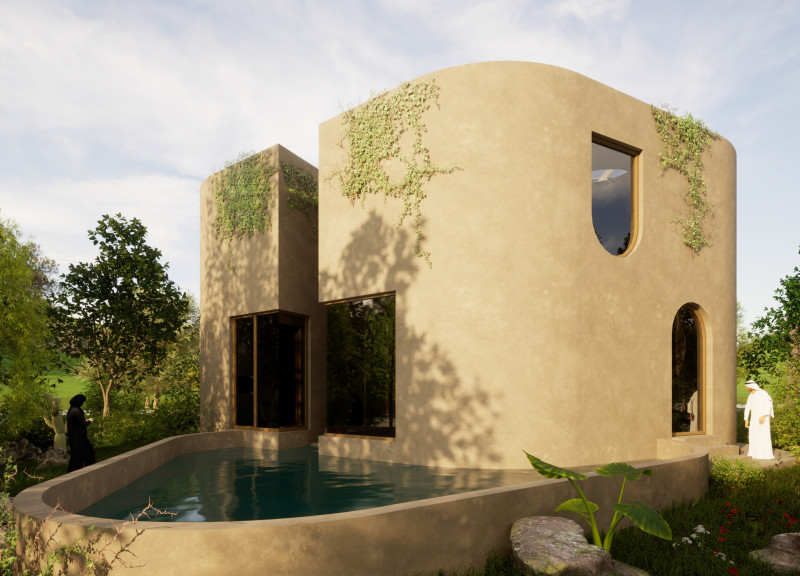5 key facts about this project
At the heart of the project is a commitment to sustainable architectural practices. This is evident in the strategic layout that maximizes natural light and ventilation, creating a pleasant atmosphere without excessive reliance on artificial climate control. The use of expansive windows and strategically placed openings not only enhances the interior ambiance but also encourages a seamless transition between indoor spaces and outdoor areas. This connection to the environment is further reinforced through the inclusion of landscaped elements, which serve to blur the lines between architecture and nature.
The materiality of the project plays an essential role in conveying its design intentions. Utilization of concrete for structural elements provides robustness and durability. In contrast, warm wooden finishes are incorporated to add texture and warmth to the interiors, promoting a sense of comfort. Glass, employed extensively within the design, offers transparency and invites occupants to engage with their surroundings, fostering a sense of place and identity. Additionally, steel is utilized effectively in the framework, allowing for expansive rooms that remain open and welcoming.
Key features of the design include flexible spatial configurations that accommodate various functions, from collaborative working areas to quiet zones for reflection and concentration. This versatility reflects a deep understanding of contemporary lifestyle needs, supporting both individual pursuits and collaborative efforts. The design encourages social interaction while also respecting personal space, allowing inhabitants to choose how they navigate their environment based on their preferences at any given time.
One of the unique aspects of this project is its integration of innovative landscaping solutions, such as green roofs and vertical gardens. These features do not merely serve aesthetic purposes; they contribute to biodiversity, provide natural insulation, and mitigate urban heat island effects. Thus, the design embodies a proactive approach to environmental stewardship, ensuring that the built environment coexists in harmony with its ecological context.
The architectural design emphasizes clarity and simplicity, prioritizing functional layouts over ornamental excess. This restraint results in an elegant expression of modern architecture that communicates effectively with its users. Within the project, attention to detail is paramount; from the selection of finishes to the careful alignment of structural elements, every component is crafted to support the overall vision.
Exploring the architectural plans, sections, and designs provides further insight into the intricate relationships established within this project. Each diagram offers a glimpse into the spatial organization and functional flow, showcasing how the building is designed to support a dynamic lifestyle while considering environmental impact. The architectural ideas embedded in this project are not only relevant to its immediate context but also contribute to broader conversations around sustainable and community-driven architecture.
For those interested in delving deeper into the elements that shape this architectural project, reviewing the presentation materials will enhance your understanding of its comprehensive design approach. From the innovative use of materials to the thoughtful integration of green spaces, the project invites discussion and reflection on contemporary architectural practices. By exploring the detailed visual and technical aspects, you will gain a fuller appreciation of how this design articulates a vision for future living and working environments.


 Marco Chirico
Marco Chirico 























